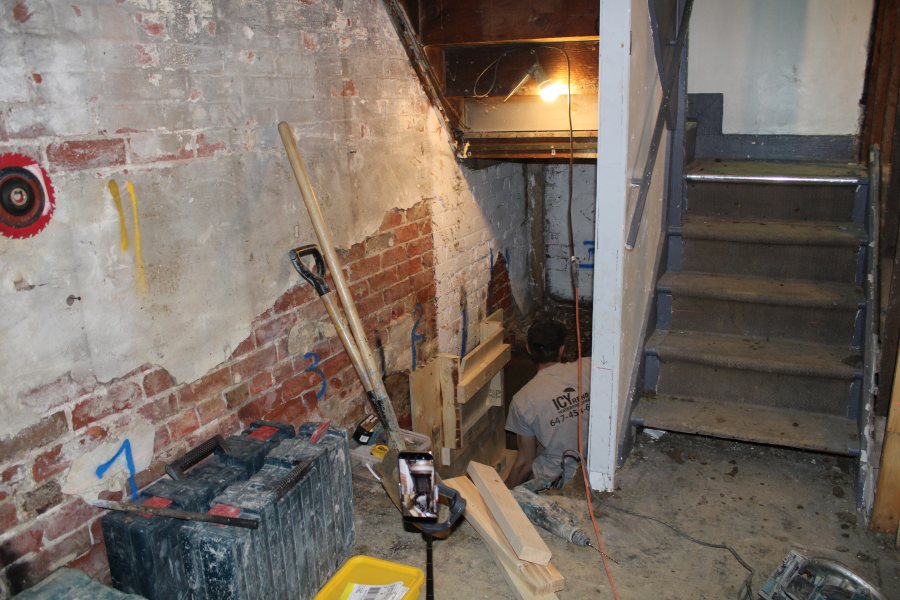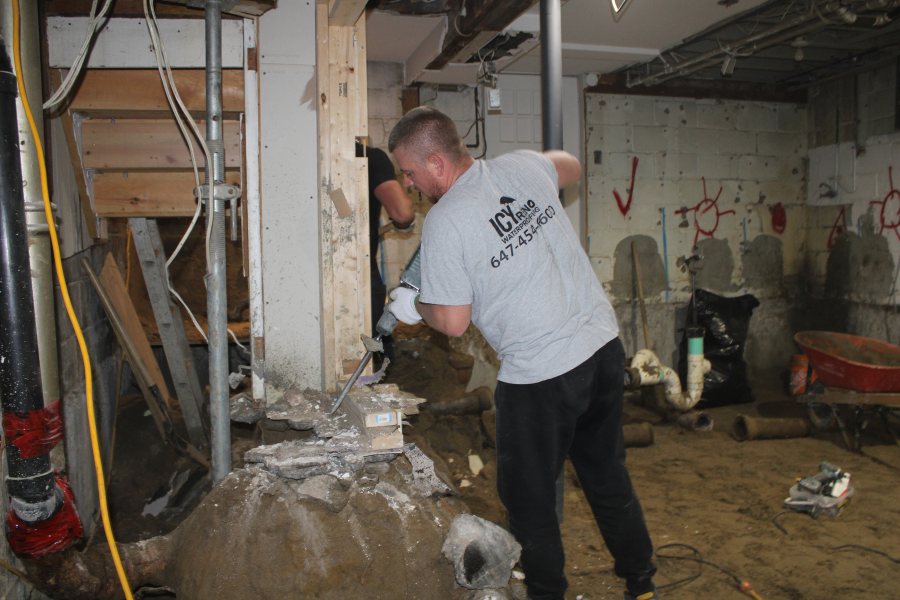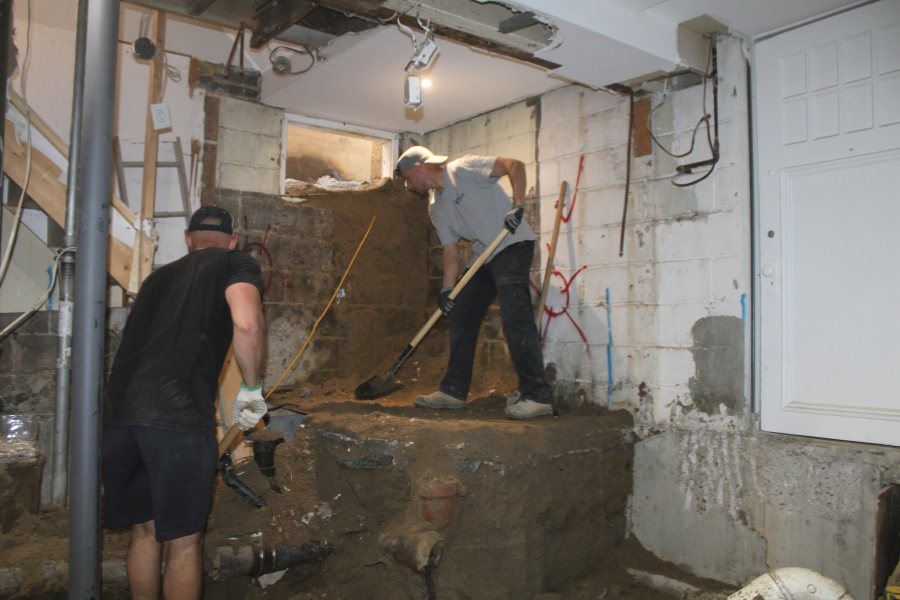Benching for Basements: A Safer Shortcut or a Costly Compromise?
In a city like Toronto, where space is limited and real estate is skyrocketing, homeowners often look down when they can’t build out. Basement renovations have become a smart way to gain more livable space without changing your home’s footprint. But when it comes to basement lowering, the method you choose can make a big difference not just in your budget, but in safety, comfort, and even resale value.
Two main techniques dominate the conversation: underpinning and benching. While underpinning is widely regarded as the gold standard, benching is often pitched as the more affordable alternative. But is it really the smart move? Or does cutting costs today mean paying more down the road?
Let’s take a closer look at benching- what it is, how it works, and when it might (or might not) be the right call for your Toronto home.
What Is Benching?
Benching is a basement lowering technique that avoids disturbing your home’s existing foundation. Instead of digging directly under the footings like in underpinning, contractors excavate the central portion of the basement floor, leaving the perimeter walls and footings untouched. A thick concrete “bench” is poured along the edges, essentially forming a ledge that supports the old foundation while allowing a lower interior floor.
Imagine scooping out the middle of a bowl without disturbing the rim, that’s benching in a nutshell.
It’s generally faster, cheaper, and doesn’t require as much engineering or permitting. But like most shortcuts, there are trade-offs.
The Appeal: Why Some Toronto Homeowners Choose Benching
- Cost Savings: Benching can save you 20-40% compared to underpinning. If you’re working with a tight budget, it might seem like the more practical choice.
- Faster Turnaround: Because it doesn’t involve digging beneath footings, benching projects tend to move quicker and require less structural review.
- Fewer Permit Complications: Underpinning requires more intensive engineering reports and permits. Benching, by contrast, is often seen as a more straightforward upgrade.
For homeowners looking to convert their basement into a basic recreation area or storage space, benching can be a tempting route.
But Here’s the Flip Side: The Real Costs of Benching

While it might save dollars upfront, benching can limit your future options and affect your home’s functionality and value in several ways:
1. Loss of Usable Space
Benching creates thick concrete ledges around the perimeter of the basement. These benches are usually 12-24 inches wide and 2-3 feet high. That’s a lot of lost square footage especially in narrow Toronto basements where every inch counts. You might lower the floor, but you’re boxing yourself in.
2. Awkward Layout and Design Challenges
Want to build a legal basement apartment? Install built-in cabinets? Create an open-concept rec room? Benches can get in the way of furniture placement, storage options, and egress window installation. They also complicate finishing work, drywalling, and waterproofing.
3. Reduced Market Appeal
If a potential buyer walks into your renovated basement and sees a bunch of concrete ledges, it may feel more like a compromise than a feature. This could hurt your resale value or limit interest altogether.
4. Waterproofing Can Get Tricky
Water has a way of finding the path of least resistance. The seams between the bench and the existing foundation can become weak points over time. Without careful waterproofing, moisture issues might emerge down the line.
How It Compares to Underpinning
Underpinning involves digging underneath your existing foundation walls and extending them downwards. The new, deeper foundation supports the full structure, and your entire basement floor is lowered to one consistent level.
- Space Maximized: No ledges, no weird corners. Just open, flat floor space.
- Better for Legal Apartments: If you’re trying to make your basement a legal rental, underpinning meets height requirements more effectively.
- Higher Long-Term ROI: While more expensive upfront, underpinning adds more functional space and boosts property value in high-demand markets like Toronto.
- Better Structural Integrity: Done right, underpinning can even strengthen your home’s foundation.
In short, underpinning is more invasive, but far more comprehensive.

Toronto-Specific Considerations
Toronto is filled with older homes- Victorian semis in the Annex, narrow lots in Leslieville, and aging bungalows in Scarborough. These homes often have shallow basements, outdated foundations, and minimal headroom. If you’re planning a basement renovation in Toronto, keep these in mind:
- Zoning Regulations: Basement apartments are popular in Toronto but require specific ceiling heights, ventilation, and egress. Benching might not cut it.
- Neighbor Proximity: In dense areas like Trinity-Bellwoods or Parkdale, the wrong digging method could affect shared walls or nearby foundations.
- Resale Value Expectations: Toronto buyers are savvy. They know the difference between a properly underpinned basement and a benched workaround.
So, Is Benching Ever a Good Idea?
Absolutely- in the right context. If you need a bit more headroom, aren’t aiming for a legal suite, and want to save some cash, benching can be a valid option.
Just go in with open eyes. Know what you’re giving up in terms of layout flexibility and long-term home value. It’s not a bad method- it just serves a different kind of goal.
Think of it like adding a deck vs. building a full extension. One is cheaper and faster. The other adds more year-round usability and equity.
Final Take: Shortcut or Compromise?
Benching isn’t inherently wrong but it can be misleading. Marketed as a quick fix, it may not fully deliver what homeowners expect from a basement renovation.
If you’re planning to finish the space, rent it out, or boost your home’s value, underpinning is likely the smarter long-term investment. But if your goals are modest and your budget is tight, benching can still work—just be realistic about the trade-offs.
As always, consult with a qualified basement underpinning contractor in Toronto who can inspect your home and guide you through the best-fit options. The cheapest path today isn’t always the most cost-effective one tomorrow.

If you’d like to learn more about underpinning, lowering, or basement waterproofing, check out our guides here and here – or give the IcyReno team a shout. We’re always happy to talk through your plans.

